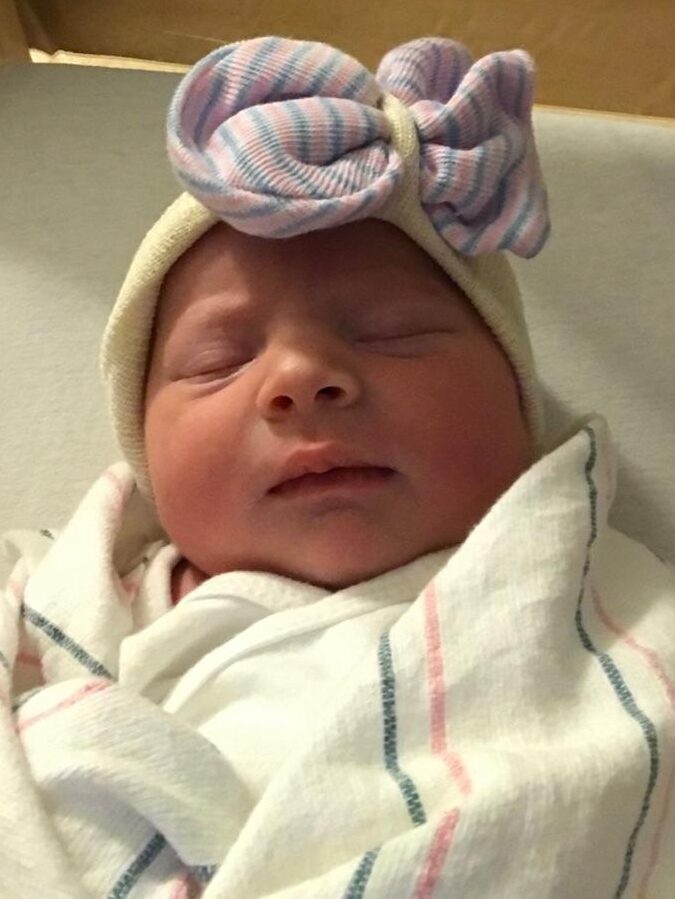THIS MOM’S HEART
This Mom’s Heart
I was 39 years old and pregnant with my fourth child. Little did I know, there was something called Peripartum Cardiomyopathy (PPCM) that was about to change my life.
I’m your average, everyday, health-conscious Mom. I exercise, eat a low-carb diet, and drink an occasional glass of wine.
My pregnancy was pretty much uneventful; however, I was monitored due to my advanced maternal age (pregnancy after age 35) and past miscarriages.
During my seventh month of pregnancy, I lost my appetite and had increased swelling in my hands, legs, and feet. My face was puffy and I was uncomfortable. Symptoms were thought to be those of a normal pregnancy, especially one with a due date at the end of a hot and humid summer.
My heart rate was climbing to around 145 bpm in my seventh month. Checking in with my Obstetrician alleviated some of my concerns. My doctor wasn’t alarmed and reminded me that my body was working harder during pregnancy and that if I was concerned, I should contact my Cardiologist. I didn’t have a Cardiologist and I felt fine otherwise; she wasn’t concerned, so I let it go.
Truth be told, that little voice in my head was starting to make noise.
Delivery
My pregnancy progressed and I went into labor seven days prior to my due date. Delivery was quick; I was in labor for about 6 hours. I delivered a beautiful, healthy baby girl.

During my recovery in the hospital, I was becoming out of breath walking from my hospital bed to the bathroom. I asked the nurse to take Lyla to the nursery hoping to get some rest. I mentioned how tired I felt and she gave me a reassuring smile and reminded me that I have three children at home and just added a fourth, I should be tired, I just had a baby.
The hospital discharged us 24 hours later and we took our daughter home. Expecting to feel better, I seemed to be getting worse. There was a heaviness in my chest, horrible pain in my back and I couldn’t lie down to sleep. Taking more than a few steps at a time would require me to sit down and catch my breath. I had a persistent cough, swollen from head to toe, and was extremely uncomfortable. Oddly, feeling like I was getting heavier than when I was pregnant.
I began to get nervous and “Googled” my symptoms. One thing kept popping up, Peripartum Cardiomyopathy (PPCM), better known as pregnancy-induced heart failure. My symptoms were worsening, so around midnight on my second day home, I was taken to the ER. A CT scan revealed my heart was enlarged and thus the story begins.
Challenges With Getting A Diagnosis
When faced with the fear of possibly life-threatening complications, I reached out to my OBGYN for their expertise and guidance. My doctor gave me the name of a Cardiologist in Boston who specialized in PPCM and urged me to see her as quickly as possible.
Our insurance required that I obtain a referral from my primary care physician prior to seeing a specialist. My physician and I went over my symptoms, read the CT results, and discussed what I read online about PPCM. Unfortunately, my doctor refused the referral because I had “self-diagnosed”. She wanted to be the one to determine the next course of action, however, that action was unrelated to my symptoms and unable to be scheduled for another two weeks.
After several requests, it became clear that she was not going to budge, so I left with my medical records in hand, ready to find a new doctor.
Again, I reached out to my OB and she referred me to a primary care physician in Boston, I called and spoke with him directly and explained my situation. As a result, I was hooked up to an EKG in his office within the hour. He was concerned with my results and transferred me to Beth Israel Deaconess Medical Center to the CDAc Unit (Cardiac Direct Access).
Diagnosis of PPCM
As frightened as I was, there was a sense of relief to be under the care of a Cardiologist. Nurses were hooking me up to machines and blood was being drawn. Everyone was moving swiftly, yet calmy. My EF (Ejection Fraction) was 27. The Ejection Fraction refers to the percentage of blood moving from the heart each time it contracts. This number helps determine how your heart is functioning. A normal EF is between 55%-70%. My lungs and belly were full of fluid, my body felt like it was going to pop.
The doctor asked if I’d ever heard of Peripartum Cardiomyopathy (PPCM). I responded, yes, it’s congestive heart failure. My mind was spinning, what happens to my children if I’m not here? Will my husband and my ex-husband make sure our children grow up knowing each other? I’m not ready to die, I’m only 40. I’m going to miss all the milestones and major events and all the little things in between that make up our life together. It just wasn’t enough time.
When the Cardiologist held my hands, I know he said something calming, I just didn’t hear it. What I do remember, is that he gave me hope in that couple of minutes by holding my hands and telling me that they were going to take good care of me and get me home to my children.
I was admitted to the hospital and immediately hooked up to an IV of Lasix, a diuretic that makes you pee, and lost 11 lbs of water weight in under 2 hours. Before leaving the hospital I had lost 23 lbs. They started me on beta-blockers, ace inhibitors, and potassium, and I was given the heart failure diet to follow.
Additional Concerns
The doctors found that along with having Peripartum Cardiomyopathy (PPCM), my Hilar Lymph Node was enlarged, as a result, an MRI was ordered and confirmed the finding. *The Hilar region is where the bronchi, arteries, veins, and nerves enter and exit the lungs. Enlargement of the hilum may be due to tumors, pulmonary hypertension, or hilar lymph nodes due to conditions such as infections, cancer, sarcoidosis, and more.
Also revealed, were two lesions on my liver. Afraid we were about to be told that I was not only in heart failure, but I may also have cancer as my husband handed our daughter to me to breastfeed, I felt like I was watching someones else’s life unfold in front of me.
Upon further examination, the doctors were led to believe I may have had Sarcoidosis (an inflammatory disease affecting multiple organs and altering their normal structure and function).
Test results also confirmed that I have Supraventricular Tachycardia (a rapid heart rate above 100 bpm caused by electrical impulses originating above the heart’s ventricles).
The endless days, weeks, and months ahead of testing, doctors’ visits, heart monitors, etc. were exhausting. The first year of Lyla’s life flew by and I felt like I missed it. I was mentally and physically drained.
Prognosis
In a little under one year, my EF has come up from 27 to a low normal of 54, which I continue to maintain. I have Echocardiograms three times a year with regular cardiac appointments that monitor my progress. I remain on beta-blockers and Lasix indefinitely. As far as the Sarcoidosis and cancer scare, I had several MRIs and CTs in the months to follow and the lesions and enlarged nodes disappeared. No explanation was given, they just vanished and I’m incredibly grateful.
I try not to live in fear of relapse, I’m aware of my limitations and I respect them.
Life is precious and time is not unlimited. We count our blessings every day and work to give our children the best life possible. Making memories and spending time with the people we love and cherish is the most important part of our lives.
Let’s face it, not one of us will be getting out of this thing called life, alive. Enjoy the ride!
If you’d like to reach out to me and share your story of PPCM, I’d love to hear from you. Just click here to send me a message.

Disclaimer
Disclaimer: Please note that the content on lylascottage.com is the story of my diagnosis and is not intended to be a substitute for professional medical treatment, diagnosis, or advice. My hope is to increase awareness of Peripartum Cardiomyopathy (PPMC) through my story. If you believe you may have a medical emergency, call your medical professional, 911, or your local emergency number immediately. Lylascottage.com does not endorse or recommend any hospital or medical professional mentioned. Relying on any information mentioned in the post is solely at your own risk.